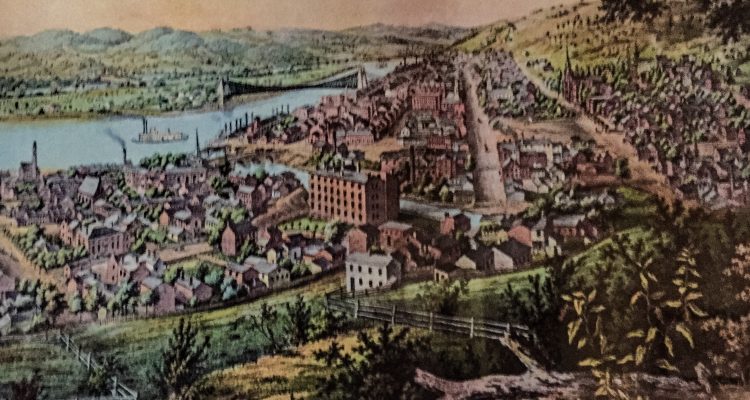Hallucinations.
Ultimately, they are what spelled the end of the vineyard atop Wheeling Hill, a 31-acre patch of Concord and Catawba grapes that were harvested for 25 years to produce pure, unadulterated altar wines for priests assigned to local Roman Catholic parishes. The vineyard was owned and operated by Father John Peter Kreusch, a long-time pastor of the St. Alphonsus Parish in Center Wheeling. His 24-year tenure as pastor was uncharacteristic at the time, per the parish’s centennial book, and when Kreusch initially was assigned, there were 356 families that provided 1661 souls for the parish in 1859, and there were 28 single men and 13 single, widowed females.
And 1859 was the same year when Billy the Kid was born, and when Edgar Allan Poe’s poetry was most popular. It was also when the city of Wheeling experienced its largest population influx, adding 5,200 residents during Kreusch’s first decade, and then 23,000 more over the 20 years to follow.
Most of Kreusch’s congregation included German immigrants just as Kreusch was, and the large House of the Lord was populated on Sundays by German natives from Moundsville, Benwood, and Belmont County, too, so they could attend Mass celebrated in their native language. He was born at Longwich on Dec. 2, 1818, and he and his brother, Mathias, traveled to New Orleans in December 1843 so they could both become Catholic priests in America. The two would separate soon, and Mathias proved mortal in the 1870s, far before Wheeling’s Father Kreusch.
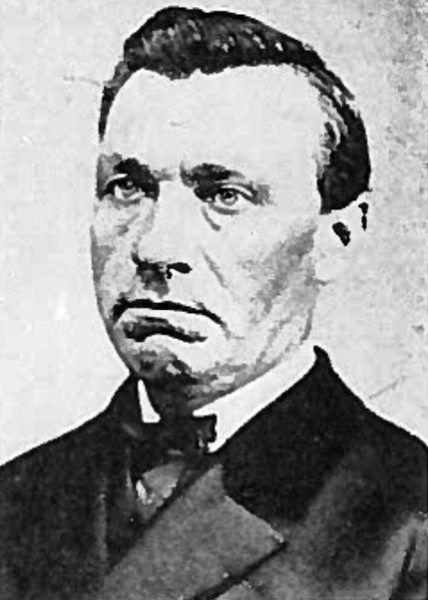
He was ordained on Nov. 19, 1848, and soon became a very popular pastor, and one reason was that Kreusch believed in decorating the interior of St. Alphonsus Church for feast days with what was described in the parish’s centennial book as, “Liturgical splendor.”
On page 35 of the centennial book, it states:
“Father Kreusch took great pains in having the church decorated on feast days. He placed a crib in his church on Christmas; and in Holy Week had the Holy Sepulchre decked in great splendor. To evaluate properly these innovations, we must keep in mind that in those days such devotional practices were more or less considered as “frills” which might easily be dispensed with. Apparently Father Kreusch was the first priest to introduce and keep up this extra-liturgical display in the Wheeling church – a practice that is still observed today, almost a century later.”
But before his personal vocation was realized, Kreusch was employed as a farm hand at grape gardens in Germany so when he elected to attract investors to purchase swaths of land on both sides of Wheeling Hill for a vineyard in 1864, his experience was recognized, and Kreusch’s goals were respected by Wheeling Bishop Richard Vincent Whelan. On those hillsides, which became known as “Vineyard Hills,” this pastor planted and harvested the grapes to produce wine for as many Catholic churches, priests, and parishioners as possible. His vineyard was the largest of eight wine-making operations located in the city of Wheeling, each of which was owned and harvested by fellow German immigrants. But Kreusch could see his beloved St. Alphonsus Church from his “Vineyard Hills.”
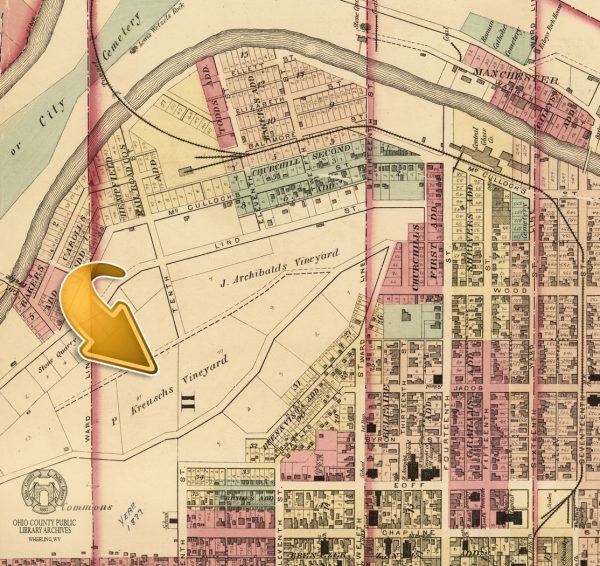
According, “The German Story,” written by Sean Duffy and posted by Wheeling Heritage:
“German immigrants were also well known for their beer brewing expertise. Henry Schmulbach and Anton Reymann operated Wheeling’s largest breweries. Schmulbach also developed Mozart Park—essentially a large beer garden. Reymann operated his own beer garden at what is now Wheeling Park. In fact, beer gardens were everywhere in Wheeling at the time, from Seibert’s Pavilion in Edgwood to the island amusement park at Warwood. Other Wheeling breweries operated by German immigrants included Uneeda, and Balzer. The breweries employed a large number of German immigrants, including one named Valentine Reuther, father of Walter, who became a nationally respected labor leader and remains one of Wheeling’s best known native sons.
German immigrants also brought winemaking to town and established grape vineyards. Rev. Peter Kreusch, for example, owned a prominent one on Wheeling Hill in an area still called “Vineyard Hills.” Of course, Wheeling was home to enough saloons to keep up demand for the brewers’ and winemakers’ products. Sixty-two saloons lined Main and Market streets in 1886. By 1904, that number had more than doubled, and most were operated by men with German surnames.”
The first few years of the Kreusch Vineyard was deemed a success, averaging 14,000 gallons of soon-to-be-blessed wine each of the first three seasons. The production was so impressive, according to the parish records, that wine cellars were dug into unplanted areas, the largest measuring 80 feet long and 31 feet wide.
A hailstorm, however, in the spring of 1869 destroyed the vintage, and his creditors became quick critics, labelling his farm as too large an operation to expect success.
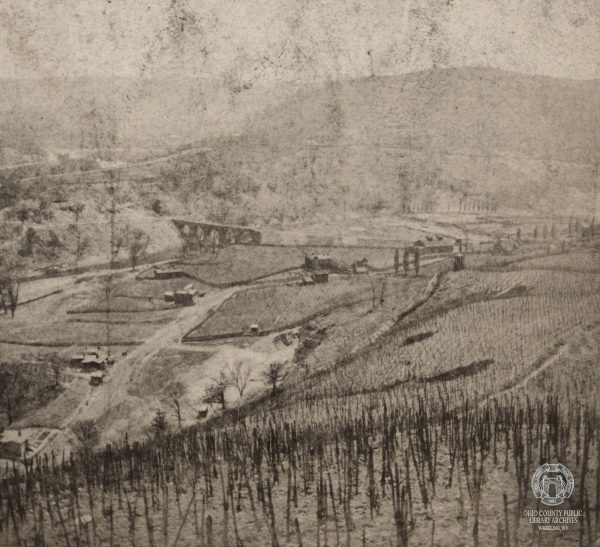
“There are now digitized newspapers online, and they have only been there for a few years,” explained Jon-Erik Gilot, the archivist for the Diocese of Wheeling-Charleston. “Before someone doing that kind of research had to slog through those papers one issue at a time, but now it’s much easier to find that kind of history.
“While I looked through some of that information, I found it pretty interesting to see some reports on the litigation Father Kreusch was involved in because of the vineyard and because it was taking up a fair amount of his time, so the Bishop assigned him some assistants, and the pastor didn’t get along with them,” he continued. “There was one in particular that he really didn’t get along with, and there were some slanderous things being said. I found it all very interesting, and it’s a story that hasn’t been told for a very long time.”
Kreusch then fell ill in February 1870 and was bed-ridden for seven months, and records indicate he was, “haunted by hallucinations.” He recovered soon enough to oversee the complete renovation of St. Alphonsus Church from 1871-1873 and the construction of a spacious schoolhouse on adjacent ground in 1874.
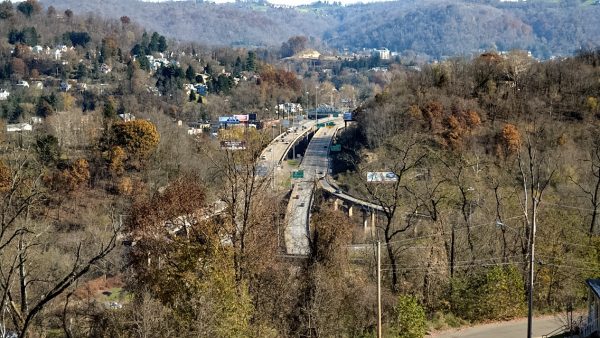
Although his illness, medically undefined by available accounts of his service, retirement, and death in Wheeling, the hallucinations continued to hamper his abilities as a Catholic pastor and as a wine maker, but Kreusch managed eight more years at St. Alphonsus until his resignation on Jan. 1, 1883. He retreated to his Vineyard Hills to work his farm until he passed away on May 9, 1888, in middle of the “Year of the Blizzard” because two storms had claimed more than 600 lives in the Dakota Territory and along the East Coast. According to his death record, old age and exhaustion caused his death.
“Nowhere does it really explain why Father Kreusch was experiencing the hallucinations,” Gilot said. “But hallucinations are mentioned several times within the centennial book in the chapter about his service to St. Alphonsus, and that parish was a very large one, and he was trying to do both. That had to be very stressful on the man.”
The vineyard continued operation until 1890, and these days, Gilot confirmed, the churches in the Diocese of Wheeling-Charleston purchase altar wine from a producer from out of the area. The land where the pastor’s vineyards were situated since has been used in various ways, including public housing and currently as a residential neighborhood and as indoor and outdoor farming locations for non-profit Grow Ohio Valley.
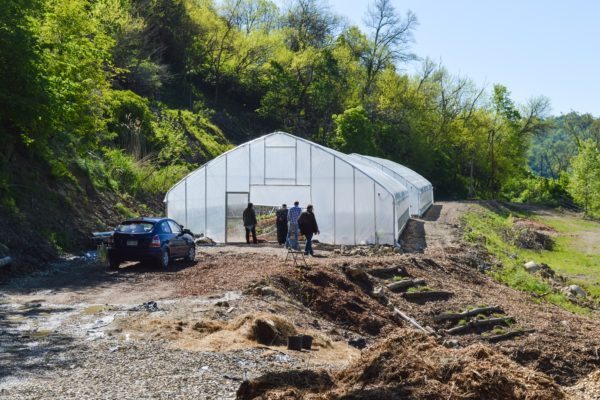
The non-profit utilizes two high-tunnel greenhouses for vegetable production on the west side of Wheeling Hill, and the organization has planted an apple orchard on the east side that is expected to produce in a few years.
“I believe it’s going to be very interesting to see what the organization produces on those hillsides in the future,” Gilot said. “And I believe it would be really cool to be able to get fresh cider made here in Wheeling again, and to be able to see that kind of view on that hillside again is going to be a great thing for the city because, other than the newer houses in that area, the hillside isn’t that attractive right now.”
(Cover photo published by J.T. Palmatary; reprinted by Oglebay Institute’s Mansion Museum in 1976)


